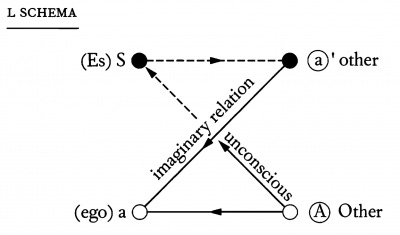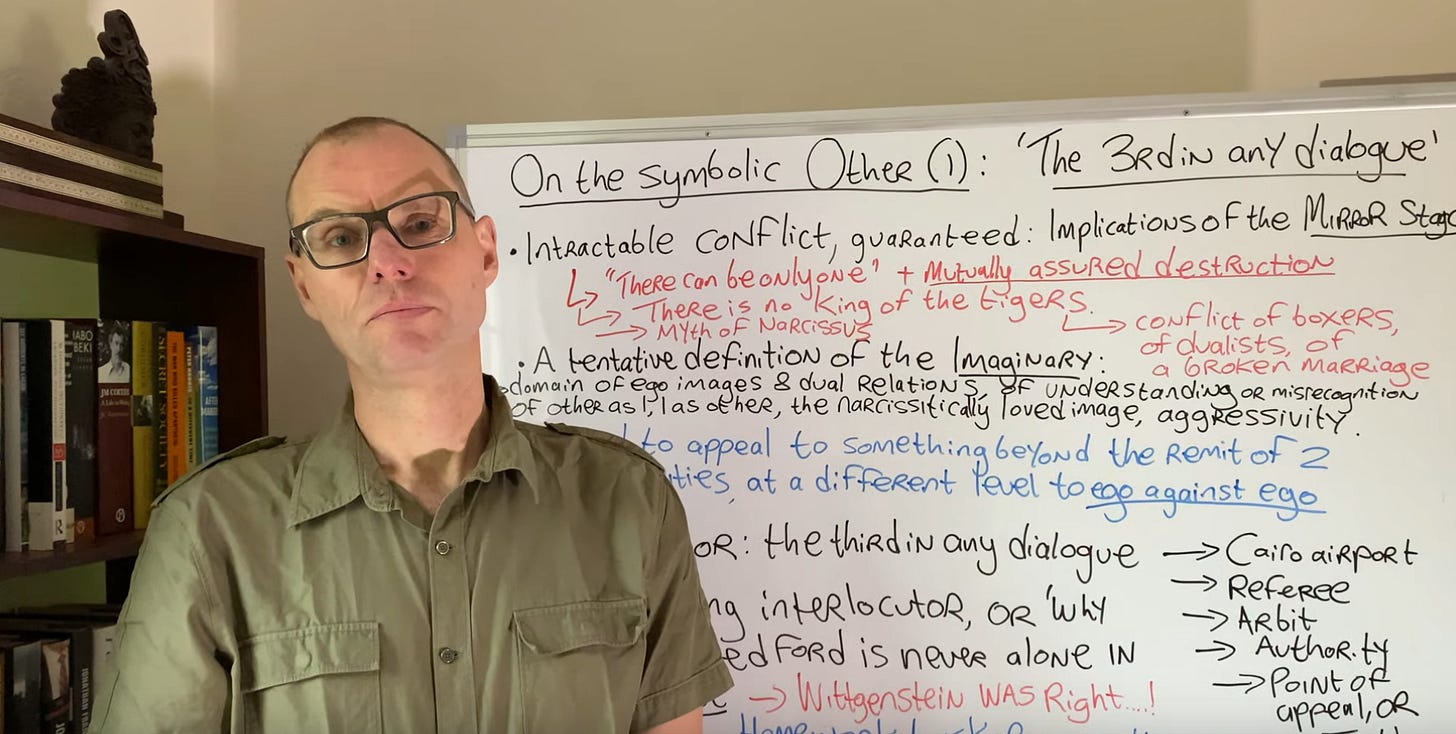The Symbolic || in RSI
Along with the imaginary, there is the symbolic, which is comprised of customs, institutions, laws, mores, norms, practices, rituals, rules, traditions, and so on of cultures and societies.
The symbolic is the non-natural world, or what we have constructed (Incidentally, thinkers like Derrida have pointed out that what has been constructed can be deconstructed.)
The most succinct way to describe the symbolic would be rules, standards, laws, and norms. Here are a few simple examples of things people talk about that I would consider symbolic.
- Marriage — This is a symbolic link between people.
- Contracts — Legal agreements between people.
- Promises — Informal agreements between people.
- Traditions — Informal family or kin network agreements.
- Language — It’s a set of rules governing word usage, grammar, sentence structure.
- Traffic Lights & Street Signs — They are symbols that tell you how to drive.
- Grades, Transcripts, & Diplomas — They symbolize having done or learned something.
What makes the symbolic interesting is that we make and maintain it because it generally makes life easier by making it more predictable. The symbolic is a great tool for keeping the unpredictable real (i.e. the natural world un-governed by human systems, laws, or civilization) at a comfortable distance.
In Schema L:

Lacan points out that the symbolic order we live in now was here (in some form) before us, and it will be here if we choose to bring more people into the world. The symbolic order greets the subject and eventually splits the subject (changes the subject from S to $). What is this split?
- The subject realizes that it must conform with the rules of the time and place it exists within or pay the consequences.
- It is the subject realizing that it must communicate with other subjects through a language, a language which is governed by rules.
Hook’s Explanation:

The psychoanalytic theorist Derek Hook has done a remarkable thing by articulating the symbolic order as the Other, as the set of rules that we often refer ourselves and others to when we want them to behave differently. Here are a few examples of this referral to the Other I’ve noticed in my own life…
- Someone told me they did not want to go to a work holiday party. I asked them why not skip it, and they replied, “If I don’t, it will be weird.” Who would it be weird to? To the Other!
- I frequently have students ask me if they can “write in the first person” (if they can say “I”) in assignments I give them. Students ask this because the Other that is APA style, which their formal papers are written in, does not allow the first person.
- Many clinicians see the DSM as the Other. They need to follow its diagnostic rules.
Symbolic — Rules & Standards:
What I think is important to see regarding the symbolic order / the Other is that it is predicated on rules and standards. Generally speaking, people will feel safe if they adhere to the rule and standards of the Other. They will feel as if they “won’t get in trouble” because they follow the rule and meet the standards (i.e. demands) of the Other the, then Other will allow them to remain within the Other’s protection (i.e. within civilization, continued employment, not getting sued, so on and so forth).
At times people will also try to force others to follow the rules or comply with the Other's standards. One example that I hear all the time in my professional life is someone starting a sentence with, “As social workers we must…” Any sentence that starts like that is implying that there is some sort of symbolic order, a big Other, that social workers (or whatever other professional titles you want to put into the sentence) need to comply with. The symbolic is very present in concepts like:
- An oath
- “Do you sware, to tell the truth?”
- A code of ethics or conduct
- Case notes (in clinical/medical work)
Do you see how if someone does the above “the right way,” they can feel as if they are safe, protected, within the law, allowed to remain within civilization (i.e. not get fired, sued, etc.)?
The Symbolic & The Imaginary:
One of the similarities between the symbolic and the imaginary described above is that we want both of them to be consistent! We want both of them to help us figure out what is expected of us and what we can reasonably expect from others.
In the future, I’d like to write more about how people can use the symbolic and the imaginary instead of being used by them.